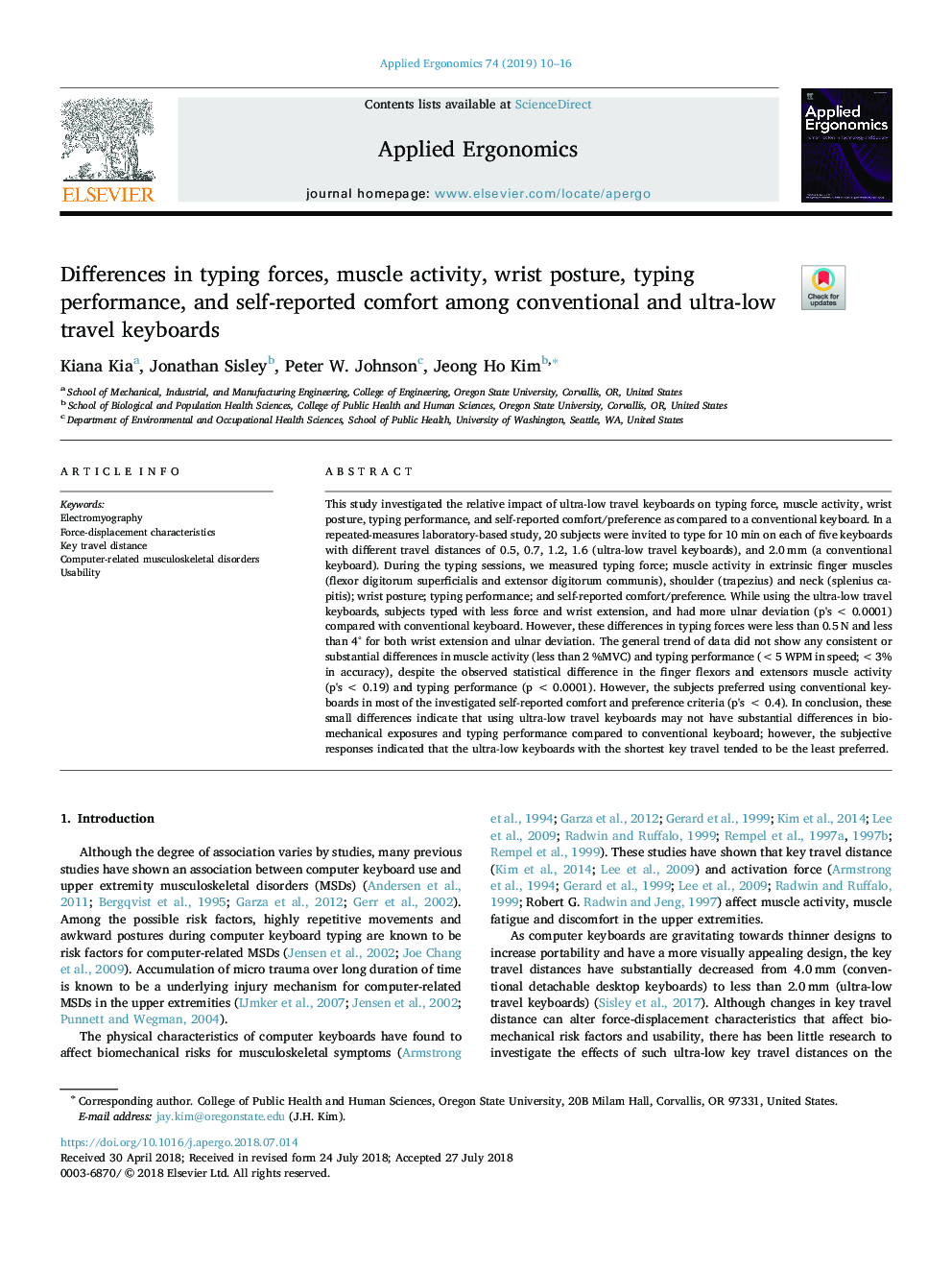| Article ID | Journal | Published Year | Pages | File Type |
|---|---|---|---|---|
| 6947528 | Applied Ergonomics | 2019 | 7 Pages |
Abstract
This study investigated the relative impact of ultra-low travel keyboards on typing force, muscle activity, wrist posture, typing performance, and self-reported comfort/preference as compared to a conventional keyboard. In a repeated-measures laboratory-based study, 20 subjects were invited to type for 10â¯min on each of five keyboards with different travel distances of 0.5, 0.7, 1.2, 1.6 (ultra-low travel keyboards), and 2.0â¯mm (a conventional keyboard). During the typing sessions, we measured typing force; muscle activity in extrinsic finger muscles (flexor digitorum superficialis and extensor digitorum communis), shoulder (trapezius) and neck (splenius capitis); wrist posture; typing performance; and self-reported comfort/preference. While using the ultra-low travel keyboards, subjects typed with less force and wrist extension, and had more ulnar deviation (p'sâ¯<â¯0.0001) compared with conventional keyboard. However, these differences in typing forces were less than 0.5â¯N and less than 4° for both wrist extension and ulnar deviation. The general trend of data did not show any consistent or substantial differences in muscle activity (less than 2 %MVC) and typing performance (<5 WPM in speed; < 3% in accuracy), despite the observed statistical difference in the finger flexors and extensors muscle activity (p'sâ¯<â¯0.19) and typing performance (pâ¯<â¯0.0001). However, the subjects preferred using conventional keyboards in most of the investigated self-reported comfort and preference criteria (p'sâ¯<â¯0.4). In conclusion, these small differences indicate that using ultra-low travel keyboards may not have substantial differences in biomechanical exposures and typing performance compared to conventional keyboard; however, the subjective responses indicated that the ultra-low keyboards with the shortest key travel tended to be the least preferred.
Keywords
Related Topics
Physical Sciences and Engineering
Computer Science
Human-Computer Interaction
Authors
Kiana Kia, Jonathan Sisley, Peter W. Johnson, Jeong Ho Kim,
